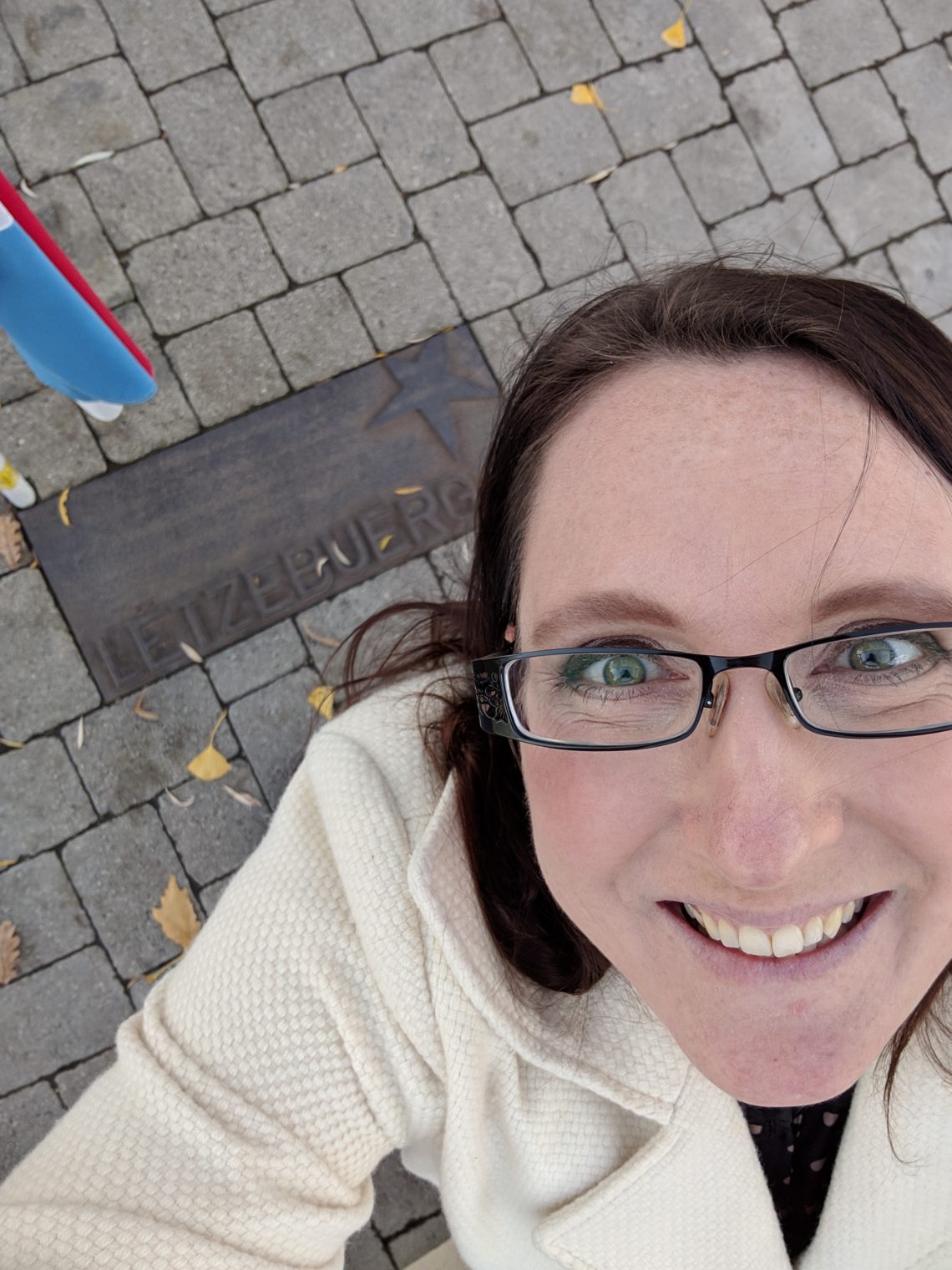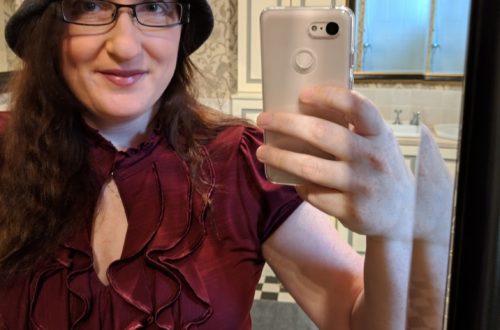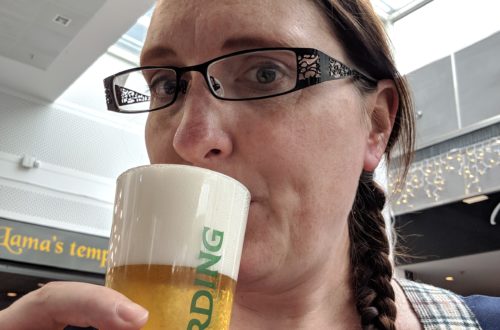After a whole week of just wandering around Luxembourg City and eating a very cheese-heavy diet, I’m sure everyone thinks that’s all Luxembourg has to offer. Not even close. Today, I was fortunate enough to have some locals (with a car(!)) show me around the Musel (Luxembourgish) River area, which is where many Luxembourgish wines come from.
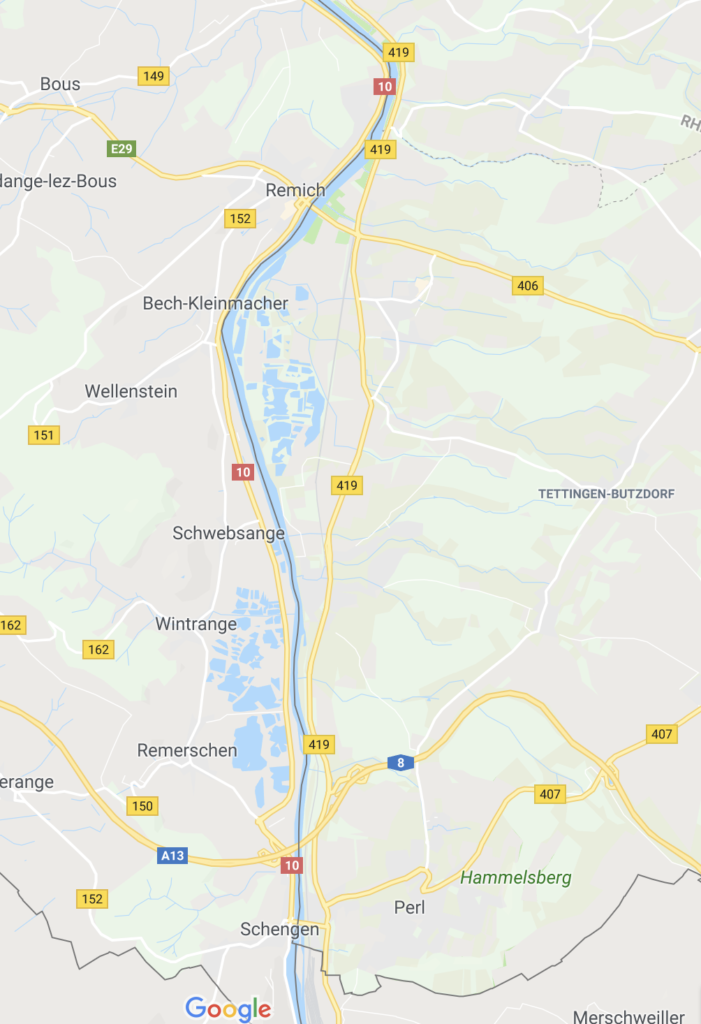
The Moselle (in English or French) River forms the border between Luxembourg and Germany, and even a tiny bit of the border between Luxembourg and France. This tiny river is a border that has affected our wine-related language. On the east side of the Moselle is Germany. Here, you can find lovely vineyards and the world’s best Riesling wines. On the west side is Luxembourg. They produce their own famous bubbly wine product: cremant. Cremant, however, is not to be confused with the bubbly made in France, to the south, in the Champagne region. Certainly, these places are all so close together and all so similar in climate that similar grapes and similar wines could be produced, but because of our human nature to draw borders and form identities around those borders, these wines are all beloved by their people, and hotly debated as being distinct, irreproducible, special entities.
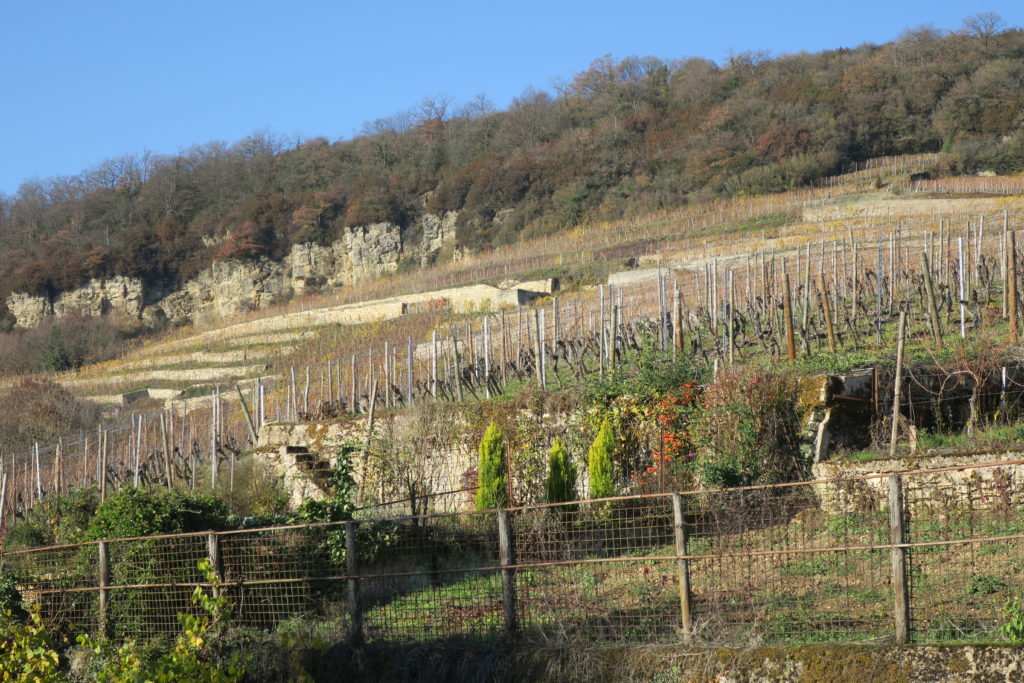
Vineyards 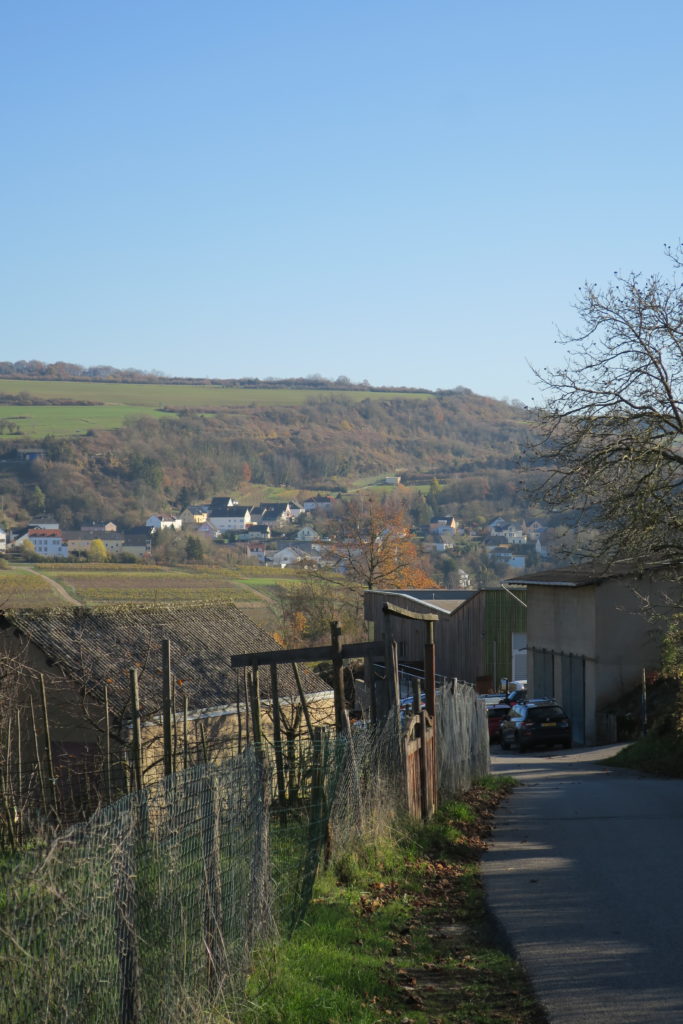
Village
The towns along the Moselle River are beautiful, exactly what you’d imagine a picturesque little Luxembourgish wine village to look like. Small, quaint pastel buildings along narrow streets, rows and rows of tasting rooms, an adorable little church in the center of each village. It’s really a beautifully scenic drive, and it’s hard to imagine what it would be like to live in one of these places. What is life like here? What is it like to grow up here?
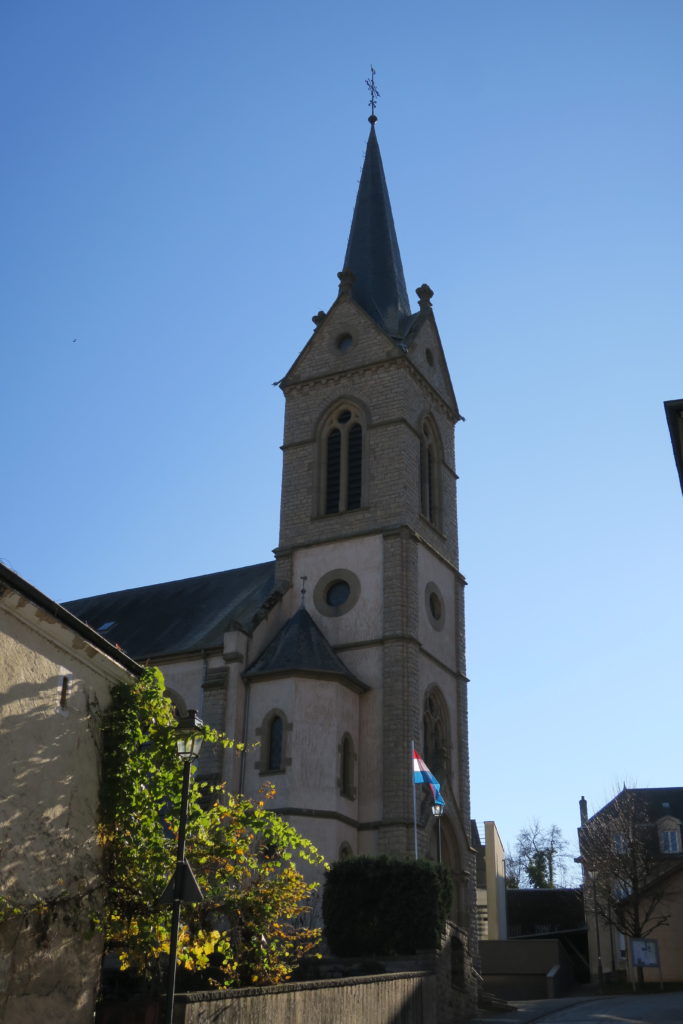
Across the other side of the river, we see Germany. It has similar little villages with similar little pastel houses and similarly pointy churches. The German side of the river is also dotted with amusing German camp sites. This is not camping in any sense that I have ever experienced. There are very sturdy-looking giant temporary structures, more similar to festival tents than backpacking tents. And next to most of the tents is also parked a full sized RV or at the very least, a car with a camper trailer towed behind. I’m not sure how long they camp, but I would have to imagine with that set-up that it would have be a substantial length of time to make it worth all that effort.
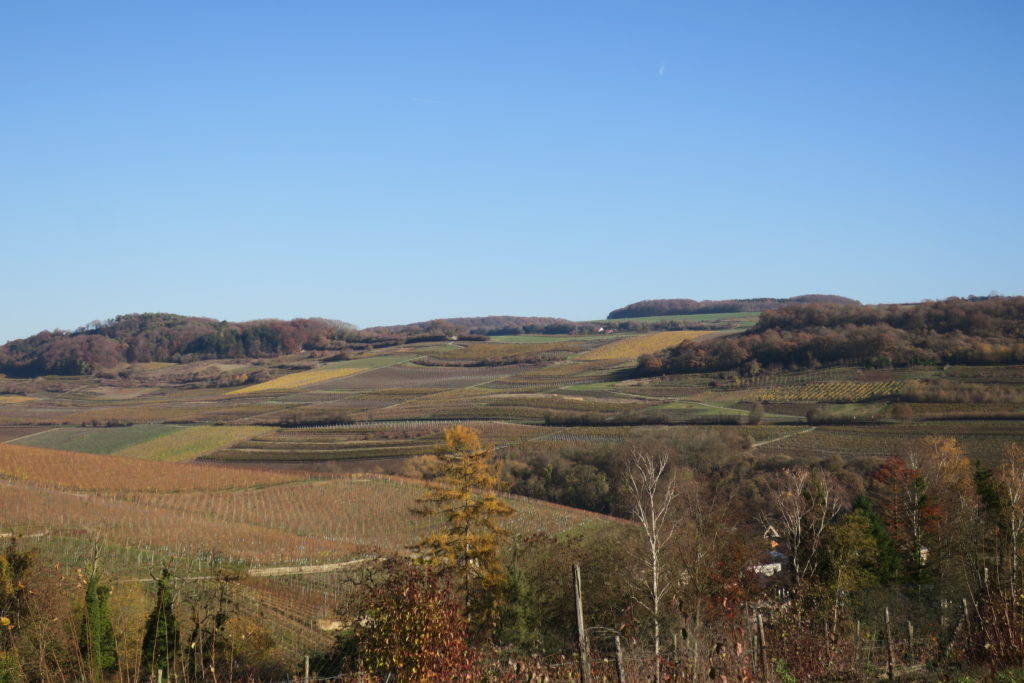
Expansive vineyards 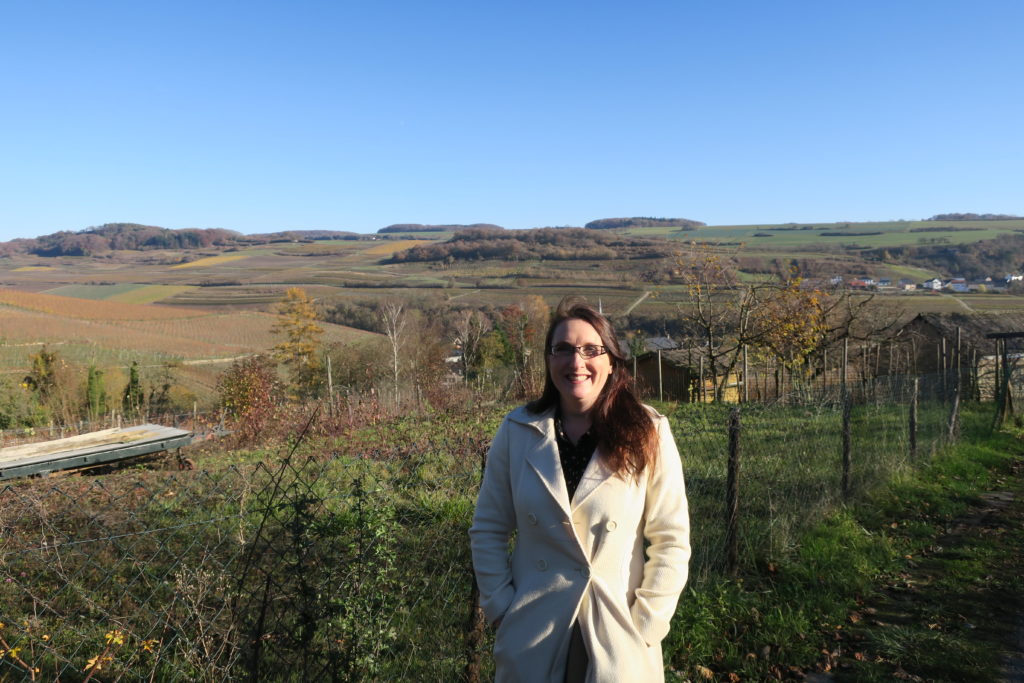
It me!
We make our first stop of the day, not at a winery, but at a cidery, the Ramborn Cider Company. There are apple varieties that have been in Luxembourg but aren’t used for eating, so they’ve been neglected. One family is trying to change that, rescuing these old varietals of apples and making their award-winning apple ciders. They do a lot of work throughout the country, planting and stabilizing apple trees, and it seems that their passion and hard work have paid off, as I listen to the lady in the tasting room talk about winning cider awards in Australia. There’s a large group of Luxembourgish people doing a tasting and listening to the owner explain the different flavors in Luxembourgish. We kind of sneak in and listen for a bit. We were offered samples of a few of the ciders, with the pear by far being my favorite. It was so sweet and delicious. They also make apple-balsamic vinegar, of which I got a bottle to take home. And they make an apple eau de vie, barrel aged in single malt scotch barrels. I had a small sampling of this one and it was surprisingly good. The smokey scotch flavors went really well with the apple. They also sell jars of orchard honey, marked by the season in which the bees produced it. I did not get all of the seasons, but I did buy one jar to bring home. I always end up with a fancy honey. And last, I picked up a little crochet apple keychain because it was cute. And the cashier said that her mom makes those, that the whole family participates in the cider business.
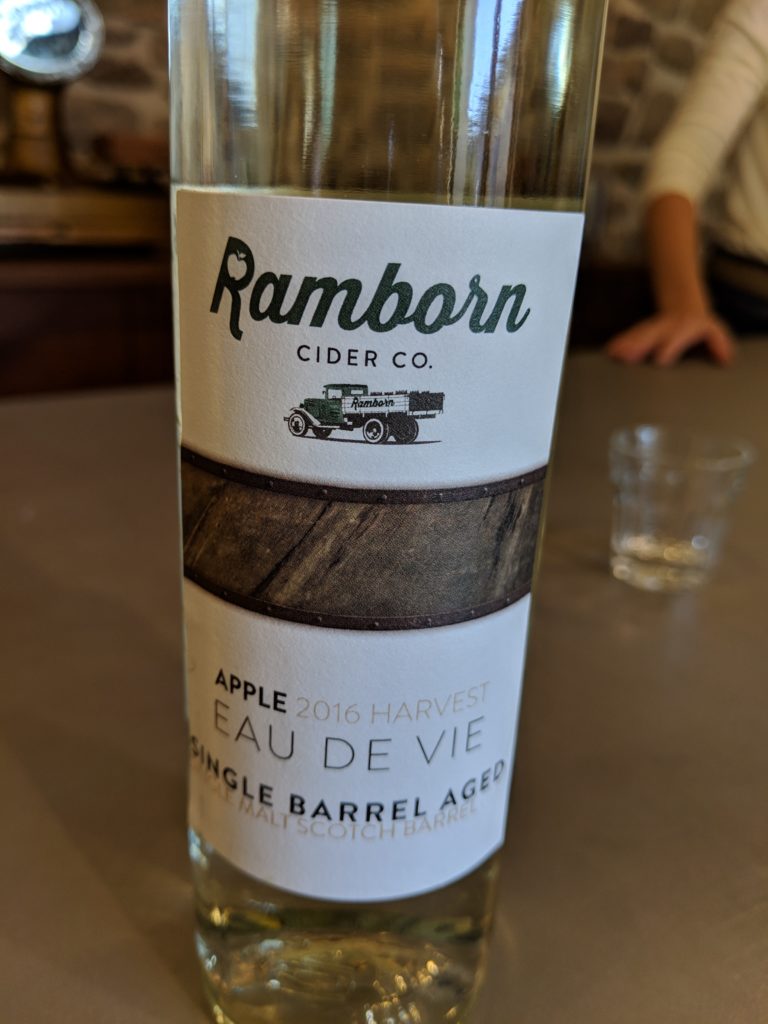
Knock-your-socks-off Eau de Vie 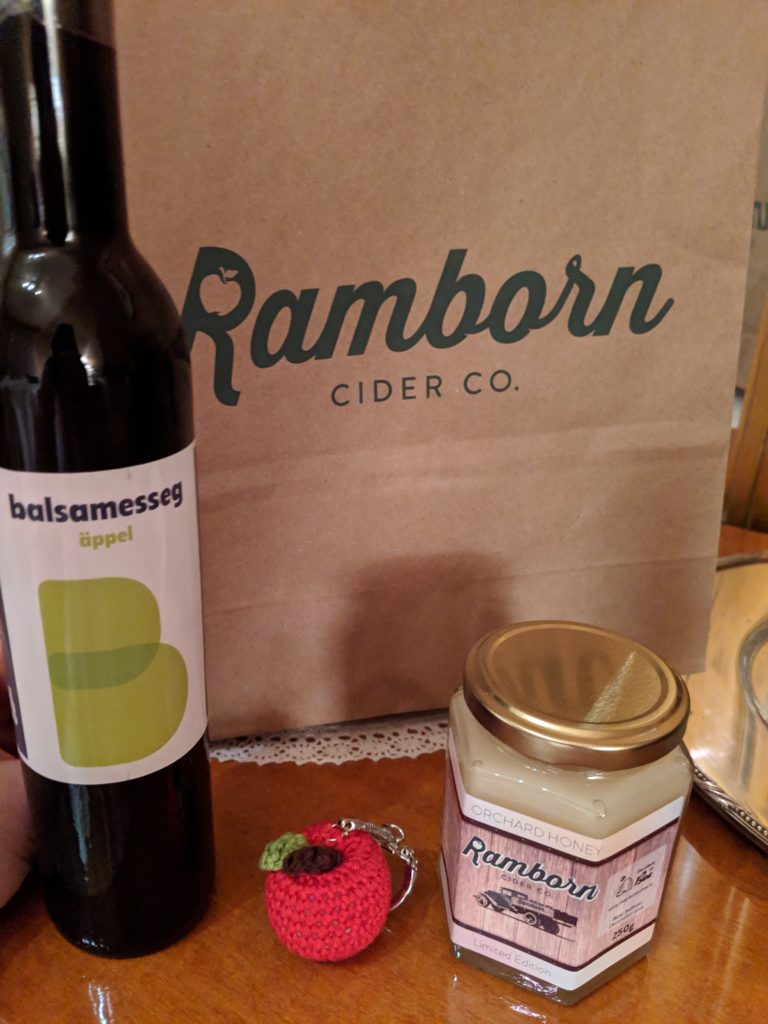
My treasures
We continued our wandering journey through more towns until we arrived in Remich, the largest of the villages, with the hopes of finding lunch at 1:45 in the afternoon. We were perhaps a bit too relaxed in our adventuring, as we stopped many times for photos and little walks through towns where, sadly, most of the tasting rooms are closed because it’s Sunday. We were planning to get back to the few tasting rooms that were open after lunch, but our lunch ended up being extremely European. We stopped into a little Italian place that was still seating people for lunch. It was cute, but sparse and a bit outdated. The pace of the service was very relaxed, as we watched the waitress every 5 minutes bring up another table’s food. But we had a great time. We chatted and, though we’ve only known each other a short time, it really was like talking with old friends. We ended up having a lot in common and a lot to talk about. I usually really struggle with new people, but everyone I have talked to in Luxembourg (which is, granted, only 4 people) has been so kind and warm and it really feels like this whole country is just a blanket you can wrap around yourself and be cosy and comfy all the time.
Our dishes weren’t terribly exciting. I had a spaghetti aglio olio, which came out as a legitimately family sized platter of a lot of olio (olive oil) and not much aglio (garlic). It was just ok. My friends ordered a salad, which was an utter monstrosity, and a large, but not superhuman size dish of lasagna that was baked in the fire of 1,000 suns. The little dish it was served in was dangerously hot and it continued bubbling like a fajita for most of the meal.
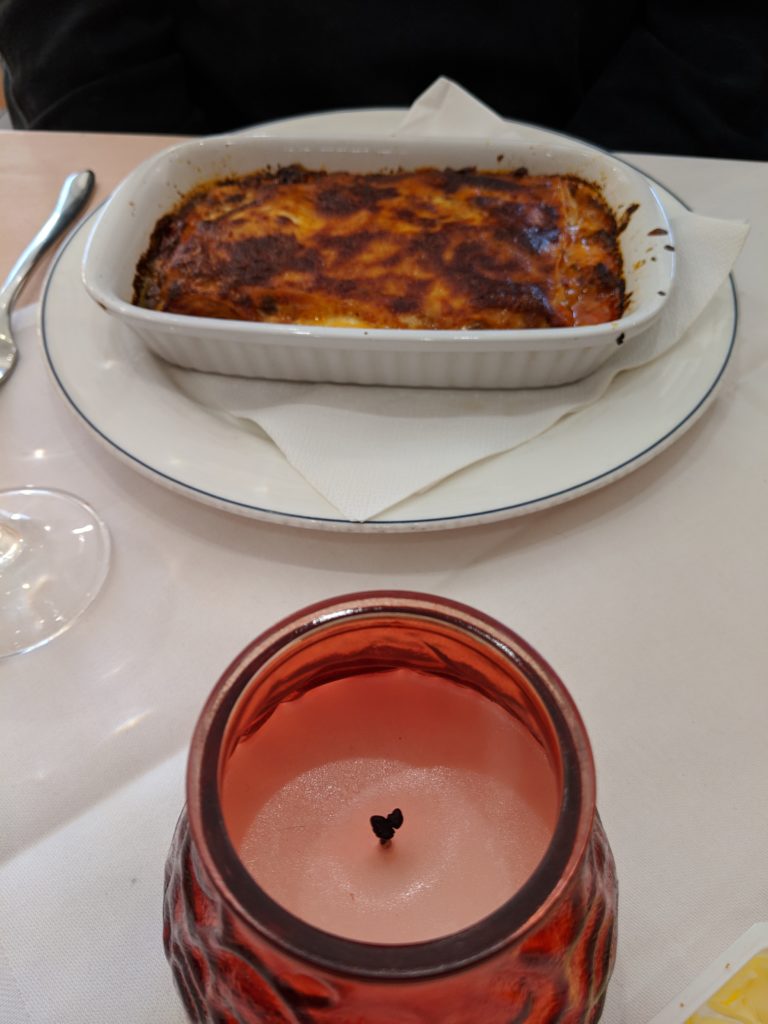
A well-baked lasagna 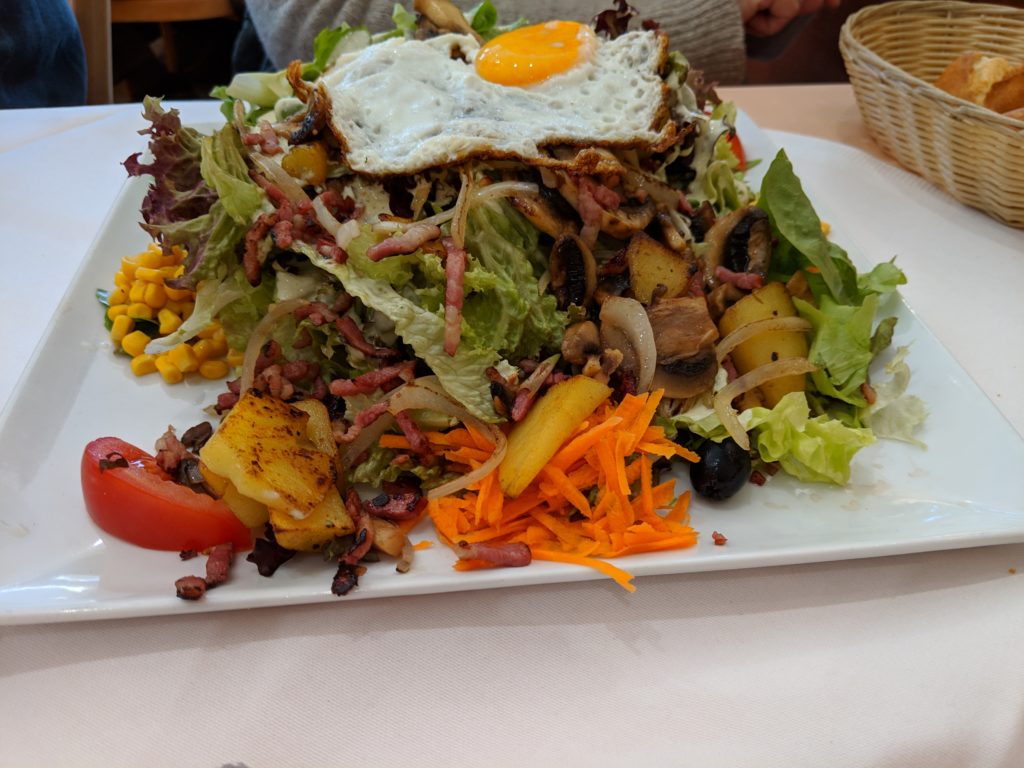
The monstrosity of a salad – possibly sentient 
Oily noodles with a campari soda
After lunch, being pressed for time, we forwent our plan for cremant tasting in favor of continuing the drive down to Shengen, the city famous for the Shengen Agreement, which is the agreement among many European countries that allows citizens to travel across borders without passport checks at every crossing, thereby allowing our fun day in April of walking back and forth to Germany from Echternach. The treaty was signed at the actual border of Luxembourg, Germany, and France, which is technically in the middle of the river. So it was signed on a barge in the middle of the river. However, in the town of Shengen, next to the river, there stand the flags of all of the member nations with little plaques for each one. It is a nice symbol of cooperation.
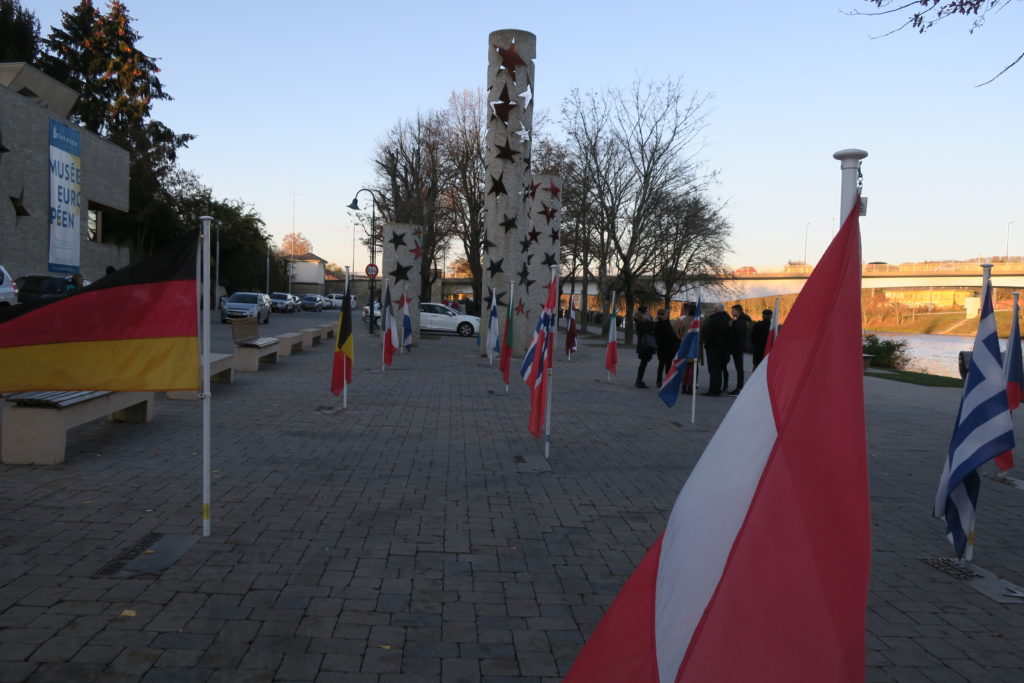
Plaza of flags. 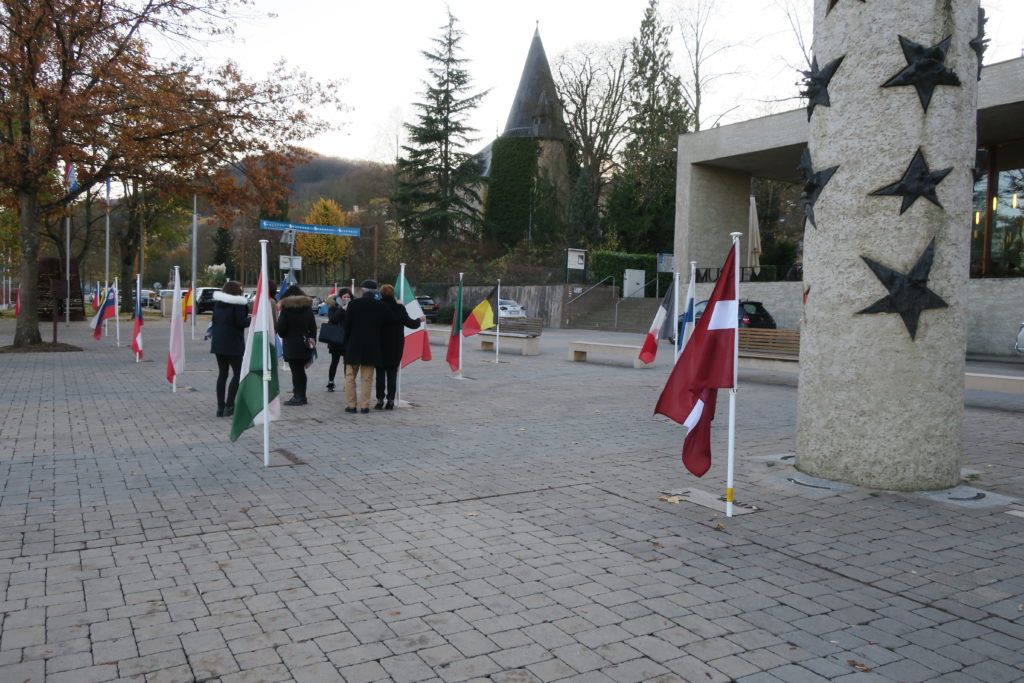
From the other direction
After that, we went far enough south to pick up the highway back to Luxembourg City. Luxembourg, the country, has the least expensive gasoline (and also apparently cigarettes) of the neighboring countries, so apparently Sunday afternoon is the prime time to come into Luxembourg and fill up for the week if you live in France or Germany. The line of traffic coming into Shengen from across the border was staggering. The number of gas stations, and the volume of cars in each petrol station was amazing. Hopefully it’s efficient, because each station had maybe 20-30 pumps. Not like the 3-5 most places near me have. We watched the license plates of all of the cars, and tried to guess which region they were from based on the city abbreviations.

The flag of Luxembourg – giving the wind a little help here 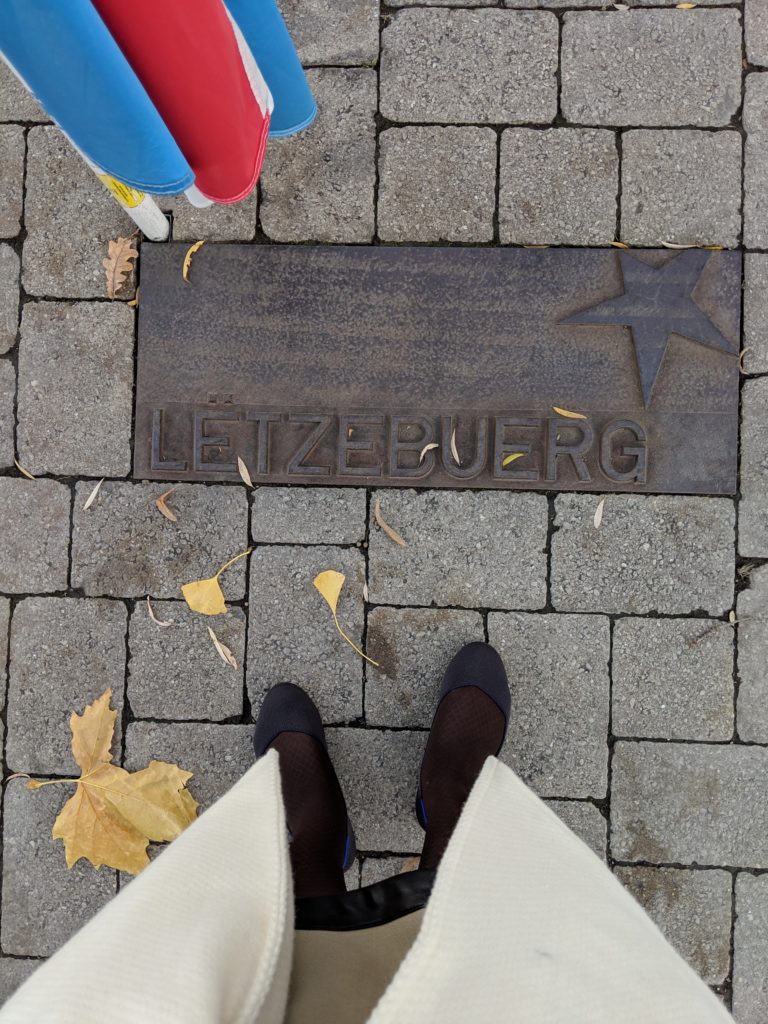
Lëtzebuerg plaque 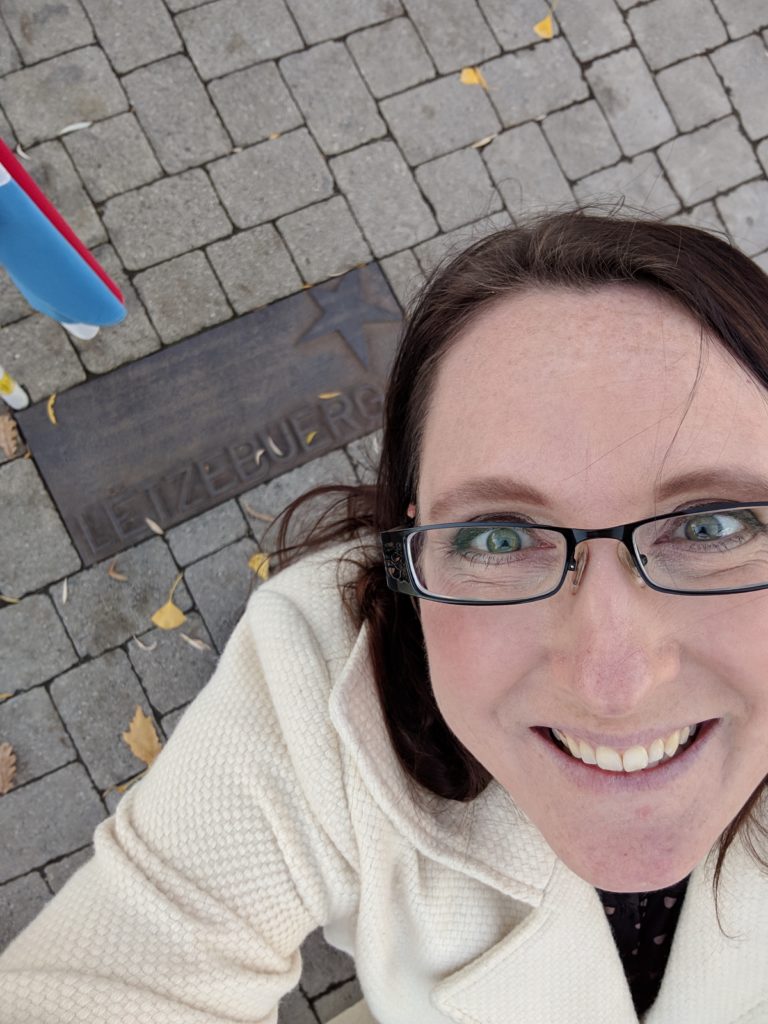
Enjoying Luxembourg
Then we arrived back in Luxembourg city and ended our adventure. It was a nice day, often times feeling like a comedy movie about a bunch of Americans traveling through Europe (but not making fun of Smart cars because we aren’t jerks. Looking at you, Ashton Kutcher). It was fun and easy and I am really thankful that I have people around who want to share the beauty of Luxembourg with me. Otherwise, I’d be stuck in town eating cheese alone all day 😉
And a final bonus: I arrived home and was offered to share some home made borsht, prepared by the housekeeper this week. She is actually from Russia, and it was definitely some delicious borsht!
